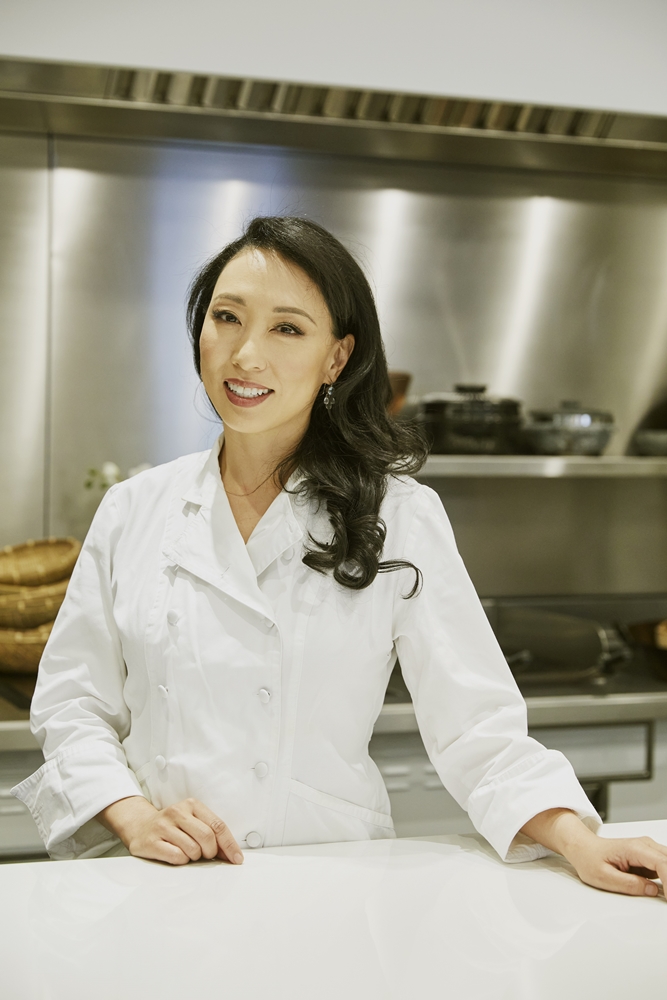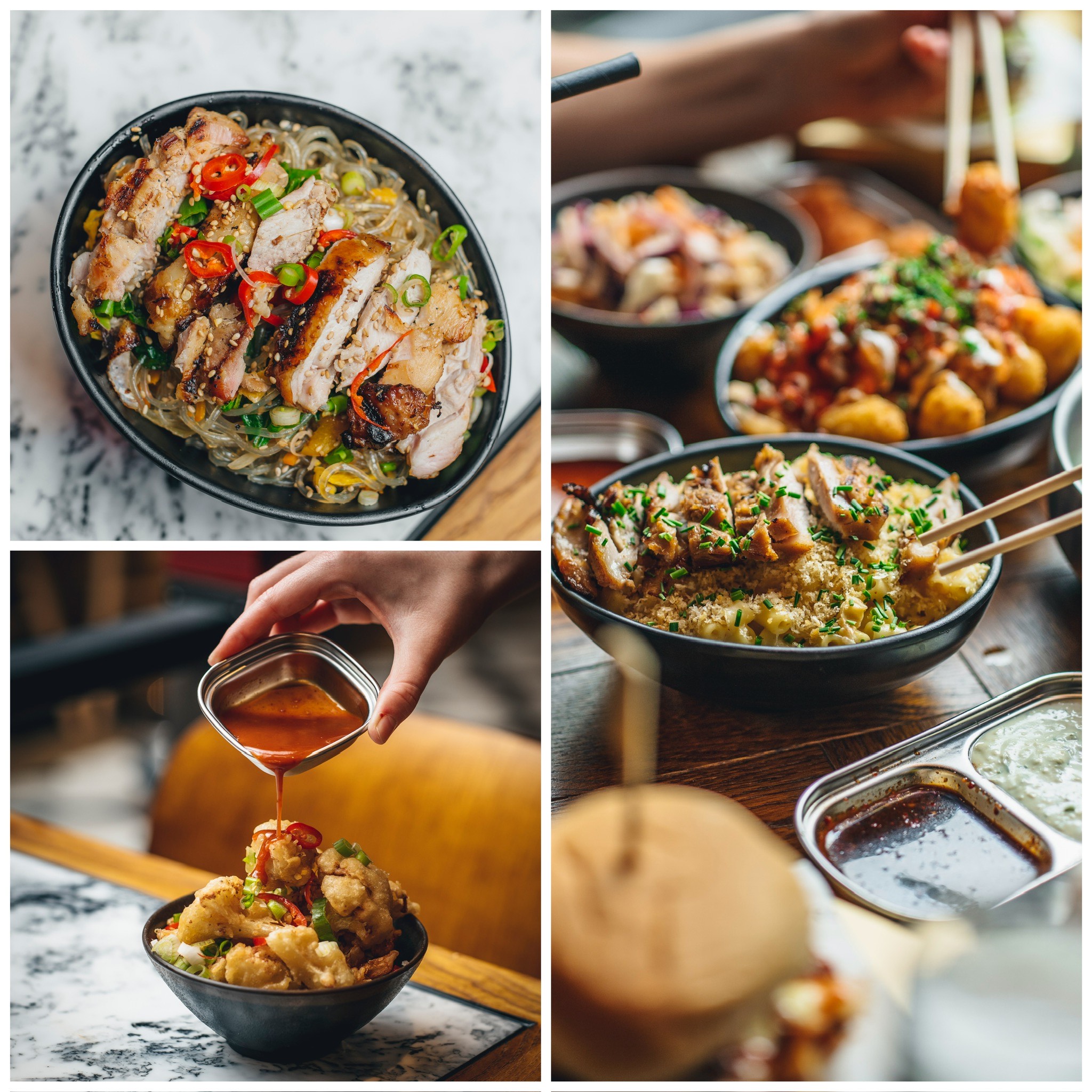- 한국어
- English
- 日本語
- 中文
- العربية
- Español
- Français
- Deutsch
- Pусский
- Tiếng Việt
- Indonesian
By Honorary Reporters Salwa Elzeny and Esraa Elzeny from Egypt

Chef Judy Joo is a food celebrity in the U.S. (Emli Bendixen)
Celebrity chef Judy Joo began a finance career after earning her bachelor's in industrial engineering at Columbia University in New York, but her passion for food steered her toward modern Hansik (traditional cuisine).
With over 161,000 Instagram followers, she was the first female contestant on "Iron Chef UK" and second worldwide. She is also the author of two bestselling cookbooks and host of the TV series "Korean Food Made Simple" on Cooking Channel and the Food Network of the U.S.. She frequently appears on shows like "Today," "Wendy Williams," "The Talk," "Saturday Kitchen" and "Cooking With the Stars."
Joo was shaped by a unique blend of cultural experiences. Born and raised in the U.S. but with British influences and strong Korean roots, she seeks to make Hansik more approachable and exciting for newcomers.
The following are the excerpts from an email interview conducted from Aug. 22 to Sept. 27.
How has your multicultural background influenced your versions of Korean food?
The kitchen is a laboratory, so my science background helps a lot when conceptualizing new recipes and food. I have an engineering degree in operations research, which comes in handy when designing new restaurants and optimizing efficiency from both the business point of view and the customer journey.And being tri-cultural (American, British and Korean), I understand how to translate Korean food to the Western world on different continents. I know what dishes and flavors work and how to make Korean flavors and dishes inviting to the Western palette and eye.
 The top left photo shows Joo's japchae, or stir-fried glass noodles and vegetables, with grilled chicken. The bottom left Korean fried cauliflower, and the right kimchi mac and cheese. (Lateef Okunnu)
The top left photo shows Joo's japchae, or stir-fried glass noodles and vegetables, with grilled chicken. The bottom left Korean fried cauliflower, and the right kimchi mac and cheese. (Lateef Okunnu)What challenges have you faced in spreading Hansik to those unfamiliar with it?
Introducing Korean food to diverse audiences is definitely a challenge, but it's all about education and starting small. Our most popular dishes are familiar ones like Korean fried chicken, bulgogi (stir-fried marinated meat) burgers or simple dishes easy to understand such as noodles and mandu (dumplings). Once people grow more accustomed to the flavors of Korean cooking, they're willing to try more dishes.
How do Korean food's cooking methods contribute to its reputation as healthy?
Korean cooking is grounded in fermentation, making it a healthy cuisine. Kimchi is full of probiotics that aid gut and overall health. The variety of dishes in traditional Hansik and the rule of five flavors, textures and colors in every meal ensures nutrients in every meal. Koreans also like to eat a lot of vegetables, never just meat. For example, Korean barbecue has a lot of vegetables prepared in ways like sauteed, raw, pickled, fermented and blanched.
What one dish do you think captures the essence of Korean culture and why?
I love the story behind budae jjigae (spicy sausage stew), which was created out of necessity because Koreans had to. Now, they eat it because they want to. This fiery bowl embodies Korea's history of war and resourcefulness in showing how a spicy broth full of army rations became a loved tradition.
What impact has your TV shows had on viewers?
A woman in Oregon wrote me an email saying her daughter dressed up as me for Halloween. I loved that, it was so touching. I think it has a lot to do with being one of the few Koreans on television in the U.S.

This is a poster of Judy Joo's TV series "Korean Food Made Simple." (Jean Cazals)
Any favorite memory that influenced your cooking style or philosophy?
Our family used to sit down and make mandu together, so my fondness for them remain to this day. I gather most of my inspiration from my travels and love to incorporate new flavors I encounter in my dishes. In my cooking style, my favorite way is a quite homely and generous approach. Of course, I can do fine dining but I prefer to eat and cook more casually, in which the food hugs you back.
*This article is written by a Korea.net Honorary Reporter. Our group of Honorary Reporters are from all around the world, and they share with Korea.net their love and passion for all things Korean.
Most popular
- Visual artist Kang IJ displays work at Pyramids of Giza site
- Seoul Winter Festa to illuminate nightscape from Dec. 13
- SEVENTEEN to perform at Disney's year-end holiday show
- British writer's first novel honors Korea's forgotten heroes
- An regains No. 1 in badminton, girls' table tennis wins U-19 title
